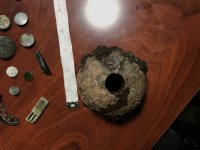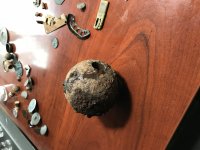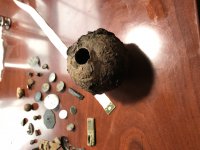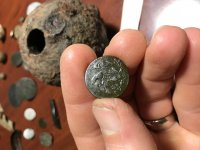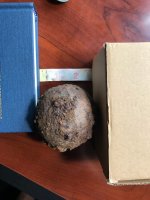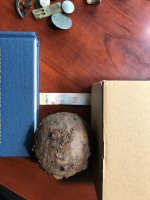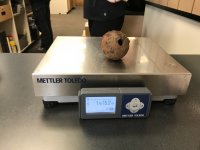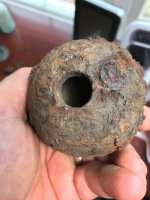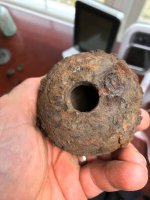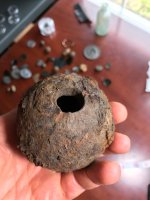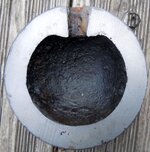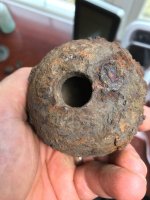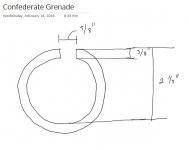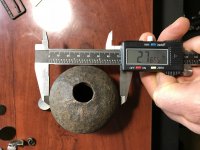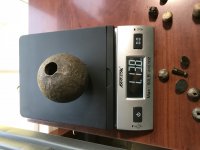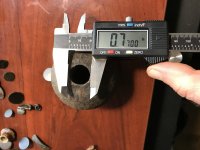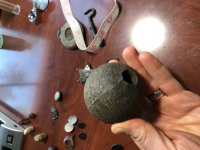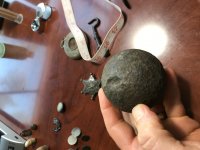Bharpring
Bronze Member
- Dec 29, 2016
- 1,451
- 5,895
- 🏆 Honorable Mentions:
- 3
- Detector(s) used
- XP Deus HF coils, Minelab Equinox 800
- Primary Interest:
- All Treasure Hunting
I went out on a short hunt today with my XP Deus HF elliptical coil and found this iron ball. At first I thought it was a cannonball. But after doing some research, I believe that is could be a Revolutionary War Grenade or Grenadier. Its about 2.5" in diameter. Can anyone confirm that it is a Rev War Grenade?
